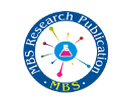Past Issue | Volume | Volume 3,Issue 4,Apr,2017
Abstract:-
In modern days, majority of people are much conscious about the healthcare system. Due to this, need a demand of ethno- botanical knowledge of medicinal plants globally. Ethnobotanical research reveals about the reverse pharmacology in diabetes and bacterial diseases, because most of phyto- constituents are obtained from plant origin sources. However, there is a need to pay an attention about safety, efficacy and conservation of medicinal plants for diabetes and bacterial diseases. Till date, no ethno botanical survey has been established on the area of Bathinda district .Now, this study was carried out to find out the folk flora of medicinal plants of Bathinda district of Punjab. It was carried out through face to face interviews with local healers and peoples. A total of 316 species of medicinal plants were recorded during a botanical survey. Most of plants are used for general health, to treat bacterial diseases.
Hassan M. Faidallah*1,2, Norah s. Alkhozai1, Tariq R. Sobahi1
Abstract:-
The key intermediate 3-(3-Dimethylamino- acryloyl)-4-hydroxy-6-methylpyran-2-one 1 was prepared by the condensation of dehydroacetic acid with N,N-dimethylformamide-dimethylacetal in the presence of a catalytic amount of acetic acid. Treatment of 1 with different reagents afforded the 2-pyrano derivatives 3-21. Preliminary biological screening of the prepared compounds revealed significant anticancer activity of some of derivatives.
![]() CHEILOSCOPY AND BLOOD GROUPS: AID IN FORENSIC IDENTIFICATION
CHEILOSCOPY AND BLOOD GROUPS: AID IN FORENSIC IDENTIFICATION
Abstract:-
Lips are two fleshy folds surrounding oral orifice. They are lined externally by skin and internally by mucosa. The skin is continuous with mucosa at transitional or vermilion border, reddish zone covered by thin keratinized epithelium. Line of contact between the lips (oral fissure) lies just above cutting edges of upper incisor teeth and on each side labial commissure form angle of mouth usually near first premolar tooth. Epithelium of vermilion area exhibits less well-developed stratum corneum than skin. Lip has many elevations and depressions forming characteristic pattern called lip print. The study of lip prints is called cheiloscopy. It is used for personal identification since lip prints are unique for individuals and do not change during the life of a person. A lip print may be revealed as a stratified surface trace with visible elements of lines, namely the furrows and if the lines are not clear, only the shape of the lips is printed. The present study was done to determine the distribution of different lip print patterns among the subjects having different ABO and Rh blood groups and to determine the correlation between their characters and blood groups. Correlating lip prints with blood groups may be useful in forensic science in accurate identification of individual than by using lip prints alone.
Leena Department of Botany, Magadh University, Bodh Gaya,Bihar,India
Abstract:-
The present study deals with effect of chemical mutagen, Ethyl Methane Sulphonate on seeds of tomato (Lycopersicumesculentum Mill.). Tomato is used as vegetable all over the world. Besides its use in cooking it has got some medicinal properties also. It is a very rich source of vitamin C. It is supposed to help in developing immune system of the body. Five different concentrations of the Ethyl Methane Sulphonate were applied as 0.10 percent, 0.20 percent, 0.30 percent, 0.40 percent and 0.50 percent. The effect of Ethyl Methane Sulphonate can stimulate higher germination rate.
Need PHD Research Writing Help?

